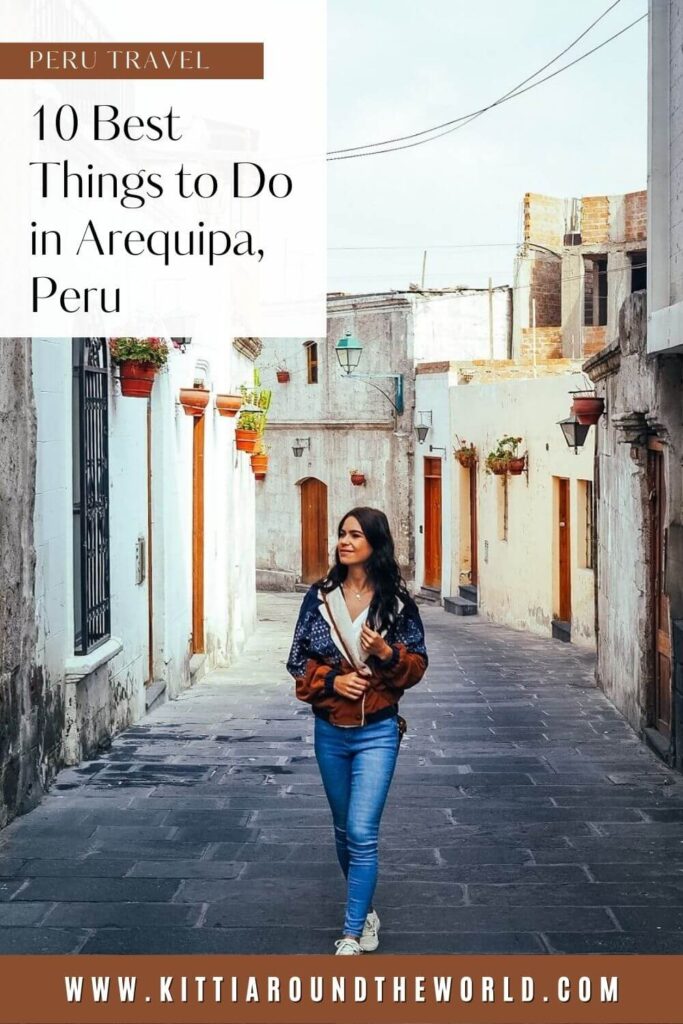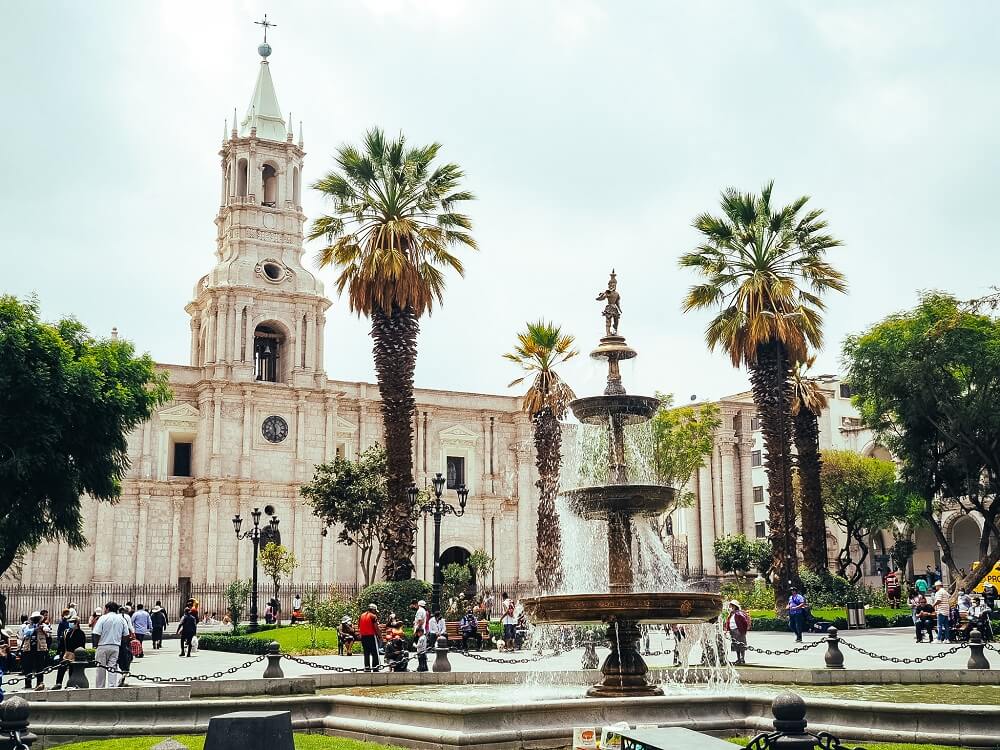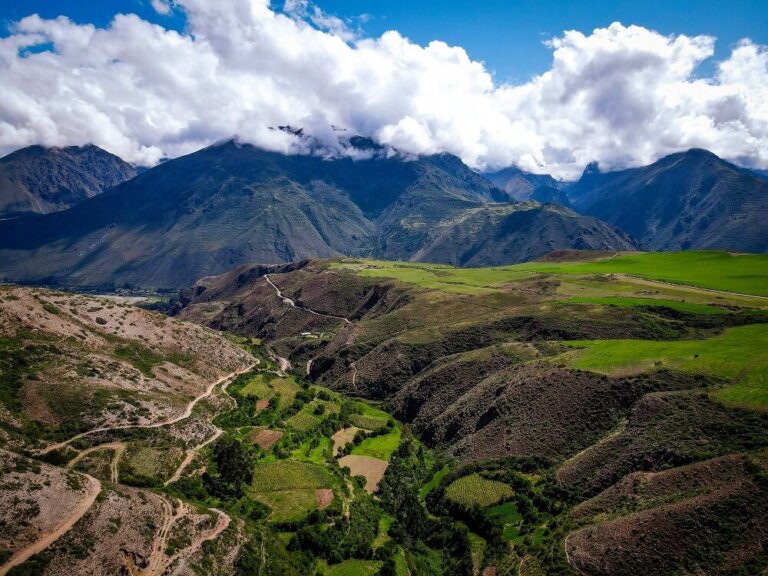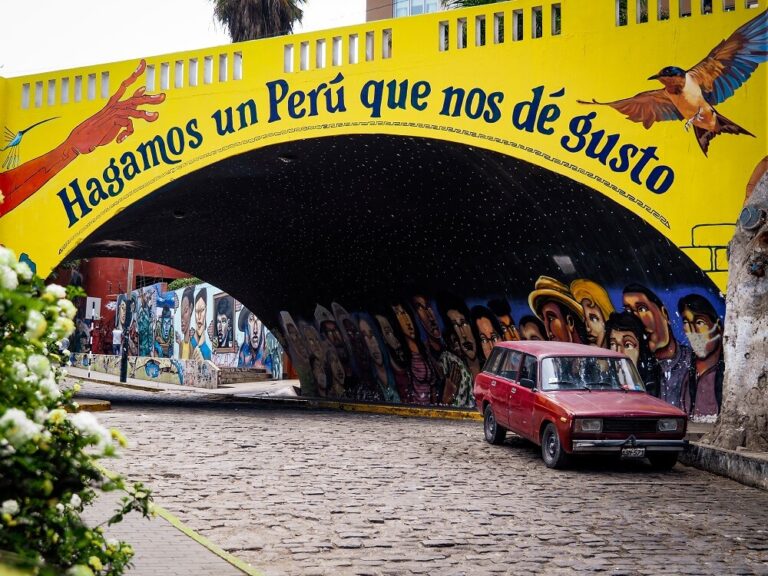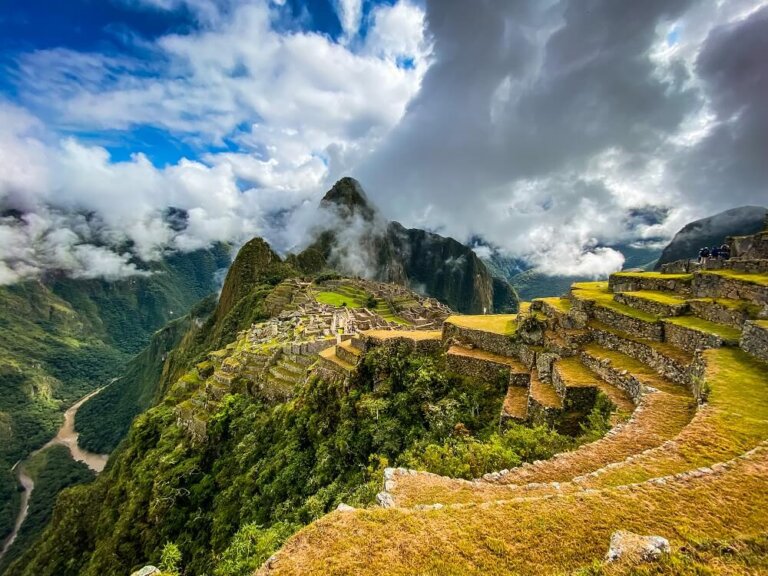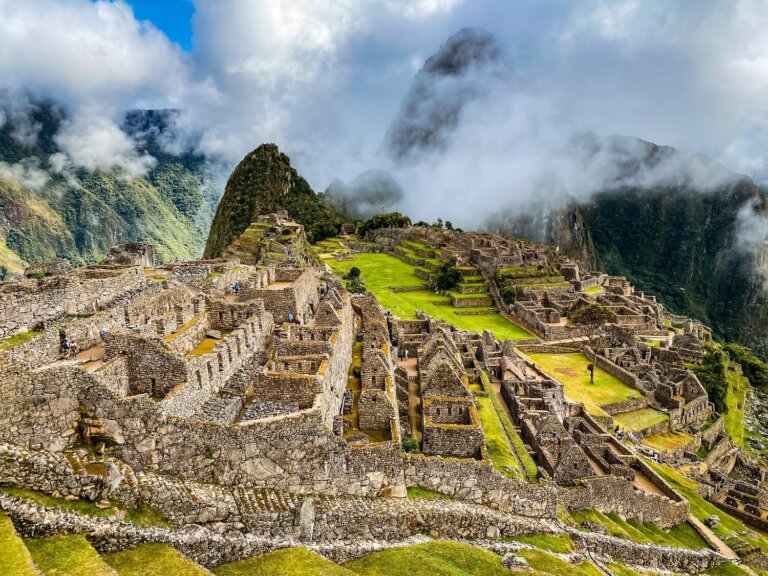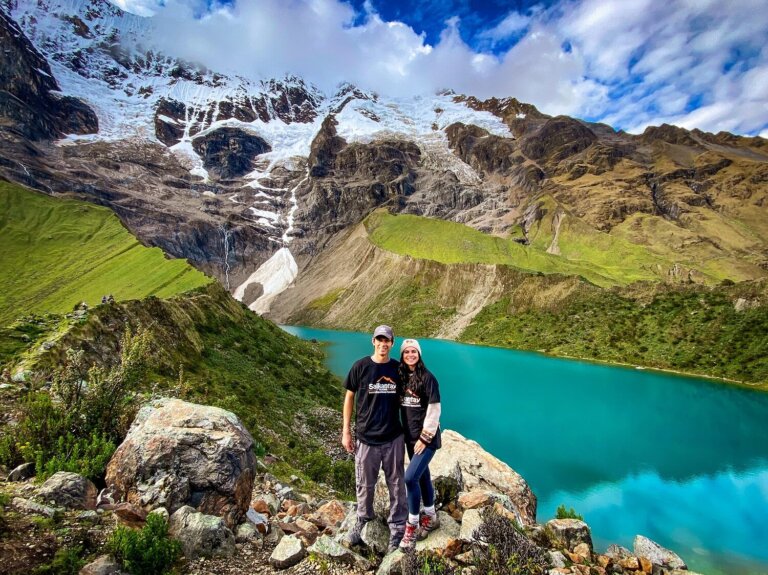10 Best Things to Do in Arequipa, the White City of Peru
This is your complete guide to Arequipa, the White City of Peru, which you really can’t skip during your trip to the country.
In this guide, you can read about how to get to Arequipa and how long you ideally need to spend there to see the best of it. The guide wouldn’t be complete without including all the best things to do, with many of our little tips from personal experience, so you can have the best time there.
If you’d like to see our adventures in Arequipa, then make sure to watch our video on YouTube. For more Peru videos, check out the Peru Playlist on our YouTube channel.
Disclosure: This post may contain affiliate links, which means we may receive a small commission if you click a link and purchase something. Clicking these links won’t cost you anything, but it will help us to keep this site up and running! Learn more about our affiliate policy.
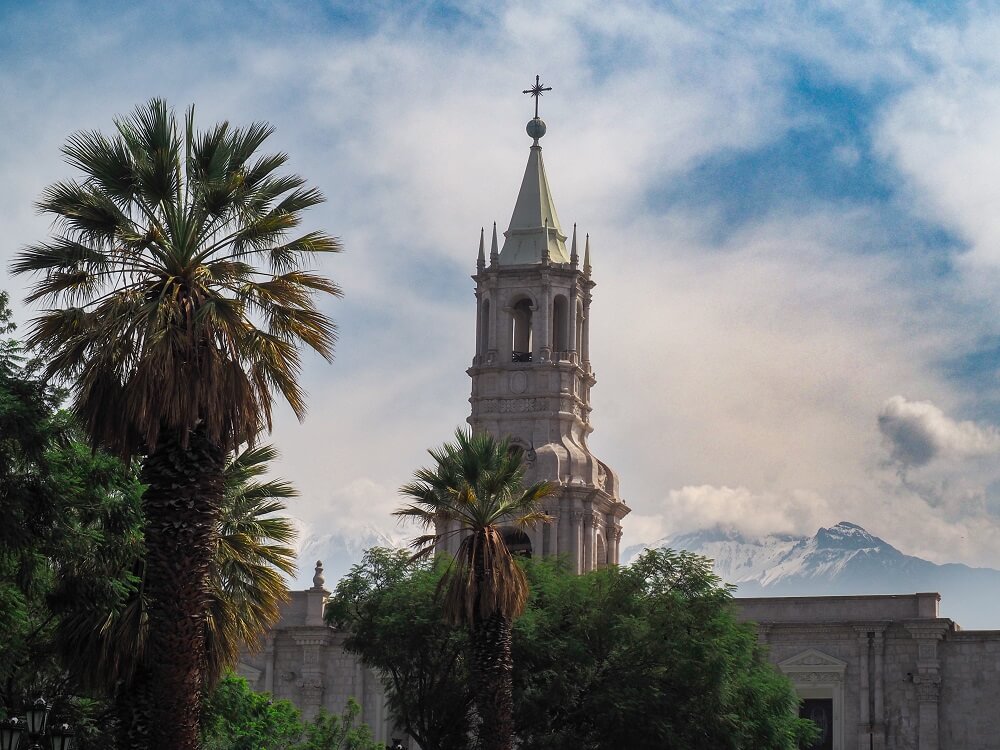
All You Need to Know About Arequipa
Located in the south of Peru, in the Chili River Valley, is Arequipa. It is the second most populated city in Peru after Lima. The city is situated about 2,300m (7,550 feet) above sea level and at the foot of three massive volcanoes: Misti, Chachani and Pichupichu.
The modern city of Arequipa was founded on the 15th August 1540 by Spanish settlers, although the area has been occupied since the Paleolithic Era. According to legend, the name “Arequipa” comes from an Incan ruler, after he said, “ari, quepay,” which in Quechua means “yes, stay”. However, others suggest that the name derives from an old dialect of Aymara.
The city is located on the “Ring of Fire”, therefore volcanic eruptions and earthquakes are very common. Earthquakes have damaged the city several times in 1600, 1868, 1958, 1979, and 2001.
Why is Arequipa called the White City? The city is referred to as La Ciudad Blanca because of the white walls of many of its colonial buildings. The walls are made of sillar which is a local white volcanic stone.
Arequipa is definitely one of the most architecturally beautiful cities in the world. So, it’s no wonder that just like Lima’s Centro Historico, Arequipa’s historical centre was declared a UNESCO World Heritage Site in 2000.
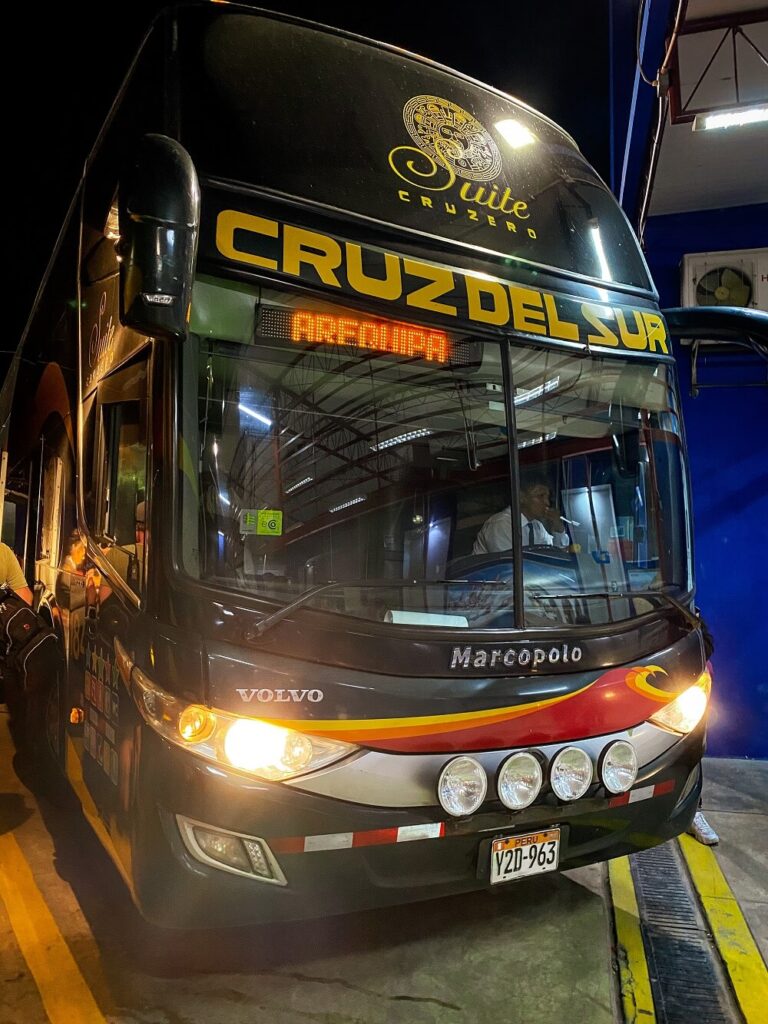
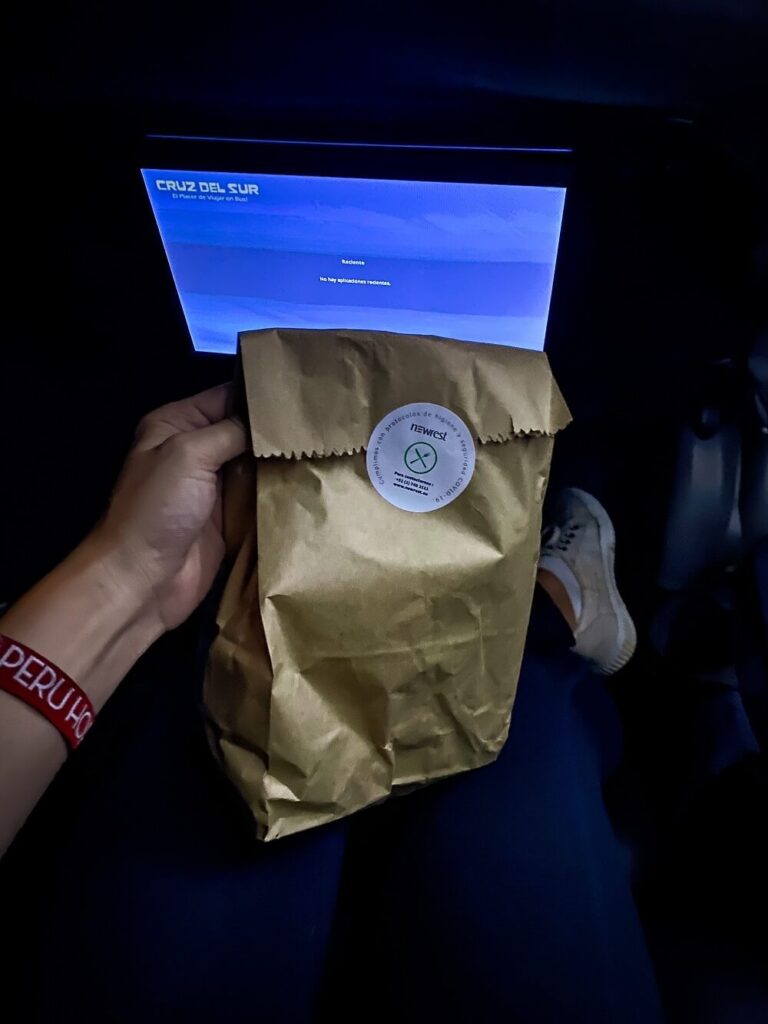
How to Get to Arequipa
There are a few ways you can reach Arequipa. If you’re short on time, then you can consider flying to Arequipa. However, if you have more time, we recommend getting to Arequipa over a few days, so you’ll have the chance to stop at some unmissable locations along the coastal regions of Peru.
By Plane
Rodríguez Ballón International Airport is one of the two main air hubs in southern Peru. You can fly direct from places like Lima, Cusco, Piura, and Trujillo. The only international destination where you can fly directly to Arequipa is from Santiago, Chile. Airlines that operate at this airport are: LATAM Peru, Sky Airline Peru, JetSmart Peru, and JetSmart Chile.
Find Flights to Arequipa✈️
By Bus
Peru Hop – If you’re on a south of Peru tour, then booking a Peru Hop bus pass might be a great option for you. It’s a safe and favoured bus company by many and has many pros which you can read about in our bus guide to Peru. Peru Hop buses normally travel from Lima to Paracas, then to Huacachina in one day. The bus leaves Huacachina the next day to Nazca from where you can get an overnight bus to Arequipa. It would be a 2-day trip, spending at least one night in Huacachina.
Public Bus – If you’re not travelling with Peru Hop, then you can take a public bus to Arequipa too. Bus companies such as Cruz del Sur, Civa or Oltursa provide services between Lima and Arequipa. The tickets cost anywhere between £20 to £40 ($US 25-50) depending on the time and bus company you pick.
Note– It takes a minimum of 18 hours (but normally over 20 hours) to reach Arequipa from Lima. However, you can opt to break up your journey and see other places. Many of the bus services provide buses from places like Ica or Nazca. These will still take a good 10-13 hours, so we recommend picking an overnight bus. You can buy your ticket online or at the bus station. Note that your bus might leave from a different terminal depending on the bus company.
You can find bus routes and companies operating to and from your next destination on these websites: Busbud.com, and Rome2Rio.
Read our detailed guide on how to travel by bus in Peru.
By Train
If you’re coming from Cusco, you can actually opt to travel by train. This is going to be the most expensive way to reach Arequipa and won’t be a quick journey either. However, it will definitely be a scenic ride and a unique experience overall. You’ll be travelling on the Andean Explorer, travelling along one of the highest train routes in the world. The journey takes over 2 days to complete. You can read more about this option here.
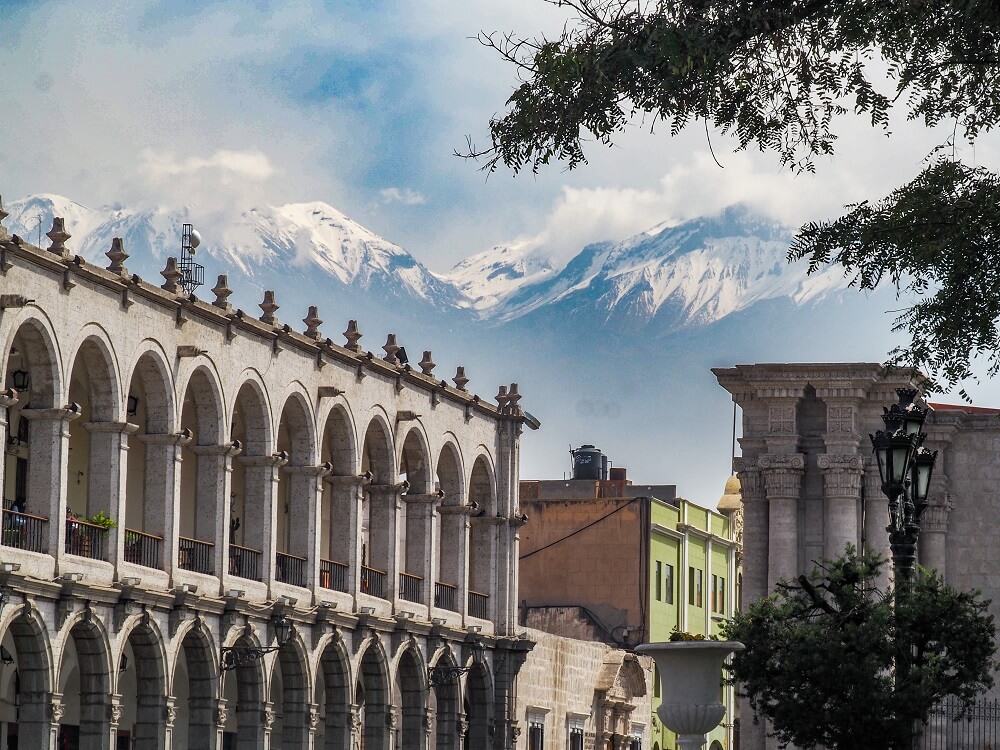
Arequipa Travel Tips
Altitude. Arequipa sits 2,335m (7660 ft) above sea level, so you can get altitude sickness. If you’re coming from the coastal areas of Peru, then you won’t be acclimatised to high altitude when arriving. There are many symptoms of altitude sickness, including dehydration, dizziness, headaches, shortness of breath and heavy breathing, loss of appetite, nausea and vomiting. It’s good to remember that anyone can develop altitude sickness and its symptoms can be less or more severe. Make sure to be extra cautious if you already have respiratory problems since the air quality can make your problems worse.
Top Tip – Make sure to buy altitude sickness tablets before you head to Arequipa. The city is definitely a great place to acclimatise before visiting places with even greater altitude like Puno (3,900m) and Cusco (3,400m).
Earthquakes. Arequipa is surrounded by many volcanoes which makes it an earthquake prone area. Whilst we didn’t feel any earthquakes in the city, we experienced one every night in the Colca Canyon. The largest one (5.6 magnitude) completely destroyed the road and we had to hike through it in order to leave the canyon. We recommend reading the US Federal Emergency Management Agency’s advice about what to do before, during and after an earthquake.
Tap Water. We don’t recommend drinking tap water in Arequipa, or anywhere in Peru for that matter. You can always boil your water or use a filtered water bottle if you want to be a responsible traveller and reduce your plastic waste.
Personal safety. Whilst we felt completely safe walking around the city, make sure to stay vigilant. Also, try not to walk at night on your own outside of the touristy areas.

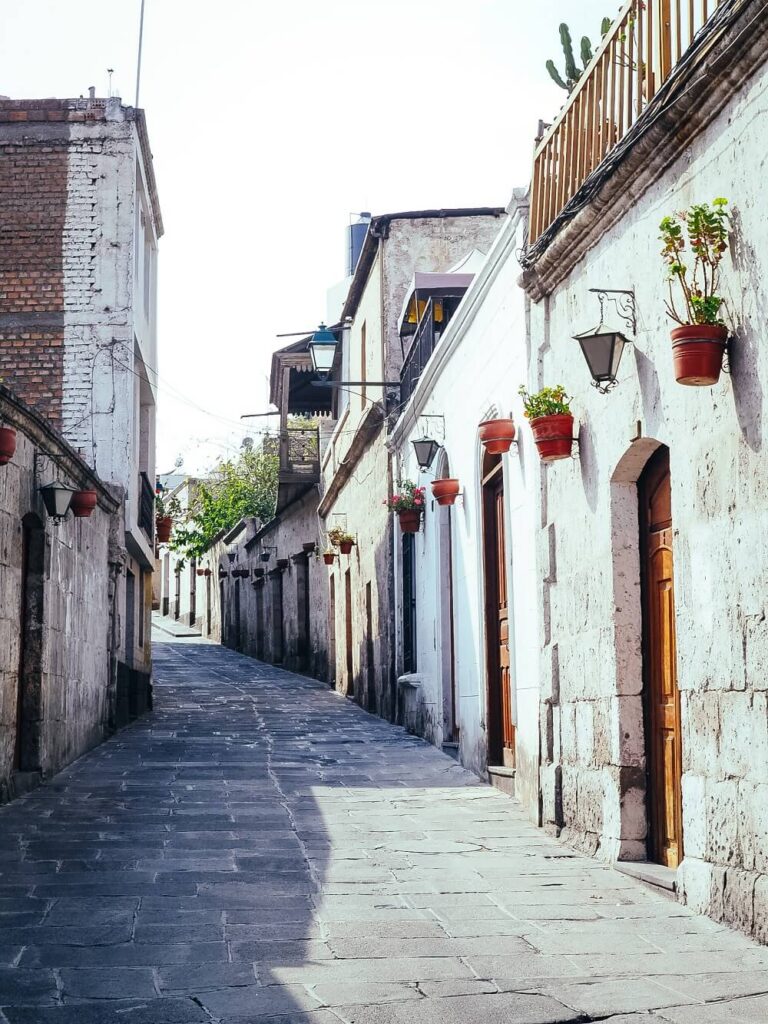
How Long Do You Need in Arequipa
This really depends on how much time you have and on your interests.
If you’re short on time, then about 2 days will be enough to see the city’s highlights in a less-rushed way. Then I guess you’d also like to visit the Colca Canyon. If you’re not a big hiker, then you can do this as a day trip. So, in total, you could do the highlights of Arequipa in just 3 days. In case you really don’t have time, you can just wonder around its Historic Centre on the day you arrive from your night bus and take a day-trip to the Colca Canyon the next day.
If you love hiking and want to do a multi-day trek in the Colca Canyon, then you would need at least 1 or 2 days in the city and an extra 2 or 3 days for hiking. You can either do a 2-day or a 3-day trek in the Colca Canyon, which you can read more about in our guide. We recommend going for the trek on your second day and having an extra day at the end for sightseeing and relaxing.
Are you a slow traveller? If so, then we highly recommend spending at least a week in Arequipa, especially if you want to complete the 3-day Colca Canyon trek. This way you’ll have more time to really see the city, and try out a lot more restaurants and coffee shops. Plus, you’ll have the chance to visit places like the Sillar Route or climb one of the volcanoes.
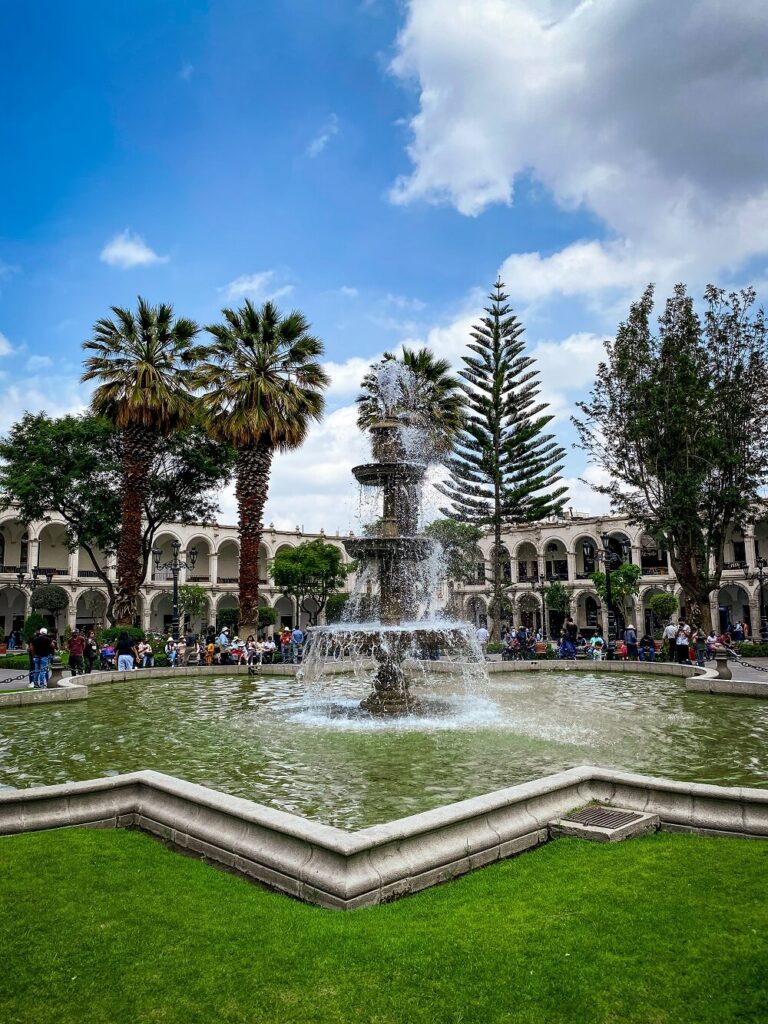
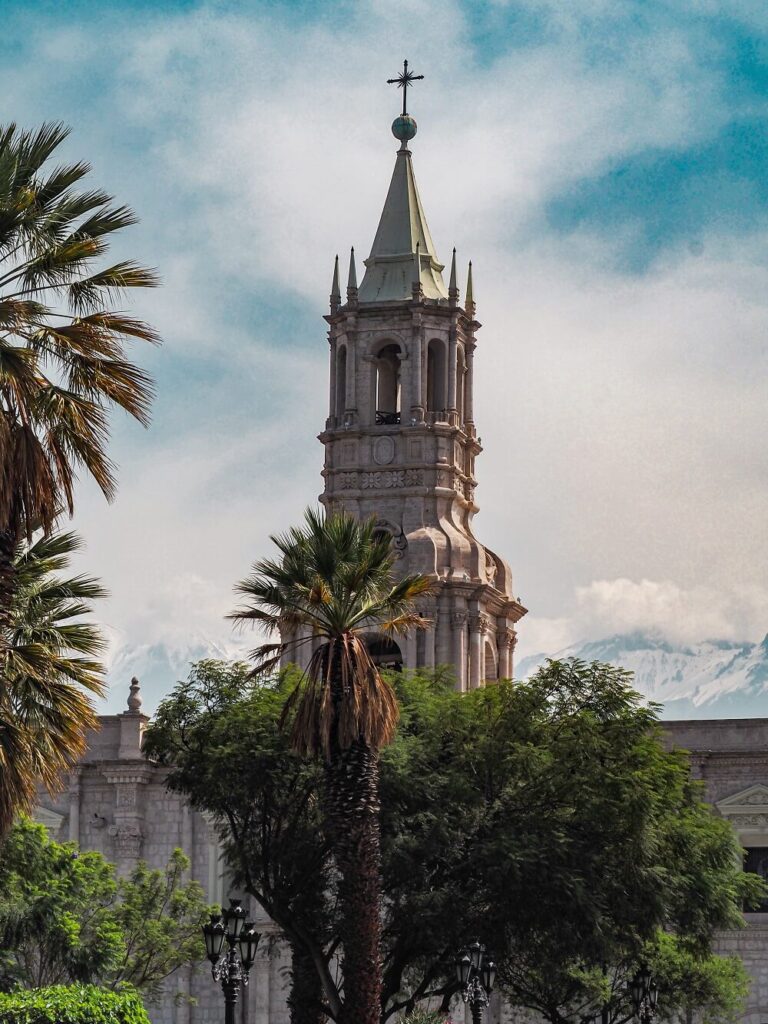
Best Things to Do in Arequipa
1. Relax at Plaza de Armas
Probably the best place to start exploring Arequipa is the Plaza de Armas. It is the city’s main public square that – just like in any other Latin-American cities – serves as the centre of urban and evening activities.
The square is large but not overwhelmingly huge like Mexico City’s main square for example. The Plaza de Armas is surrounded by arcaded colonial white buildings and the impressive Cathedral with some greenery and a fountain in the middle. What makes Arequipa’s main square even more beautiful is Misti volcano acting as the backdrop to the Cathedral.
Once you’ve wondered around the plaza, make sure to grab a queso helado (‘cheese’ ice cream), sit on a bench and just watch the world go by. There’s no better way to get to know a new city than to sit at its main square and watch the locals. Alternatively, you can also enjoy one of the many cafes and restaurants that surround Plaza de Armas.

2. Visit Basilica Cathedral of Arequipa
Taking up the entire north side of the Plaza de Armas is the Basilica Cathedral of Arequipa. It was built between 1540 and 1656 and has a neo-Renaissance architecture with a Gothic influence. The Cathedral has two impressive towers and it is the largest one in Peru.
Did you know? – The first church was built in 1544, but then it was destroyed by the 1583 earthquake. After reconstructing the church in 1590 it got partially destroyed in 1600 by a volcano eruption, then fully destroyed by another earthquake in 1604. After the reconstruction of the Cathedral was finished again, it was damaged by multiple earthquakes in 1666, 1668, 1687, 1784, 1868 and 2001 as well as a fire in 1844.
The Cathedral with Misti in the background definitely provides you with the most picture perfect city views. However, we also recommend a visit inside the cathedral. Since 2011, there has been a religious museum inside and you can also see the largest organ in all of South America that was shipped there from Belgium. You can also visit a catacomb under the building.
Entry to the Cathedral is free, but you’ll have to pay around S/.10 for the Religious Museum.

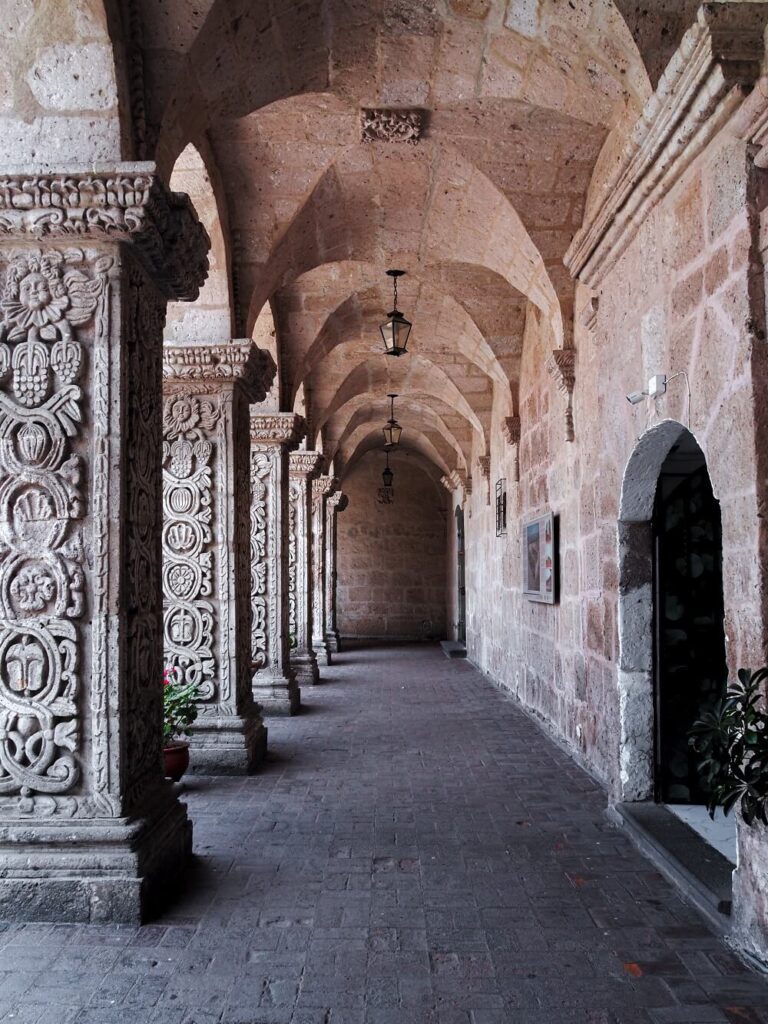
3. Stop by at the Church of La Compañia
Once you’ve visited Peru’s largest Cathedral, why not visit Arequipa’s oldest church, the Church of la Compañia. The outside of the church is really stunning and that alone is worth stopping by. It is definitely one of the most beautiful examples of the mestizo architecture. This style combines European Renaissance and Baroque architecture with indigenous styles resulting in something incredibly beautiful. If you go inside, you can see a beautifully carved wooden altar covered with gold leaf decorations.
4. Enjoy a Drink at Claustros de La Compañía
Close to the Church of La Compañia are the Claustros de la Compañía (Cloisters of the Company). The cloisters are three buildings with arches and beautifully decorated columns built in the 18th century. The buildings were constructed by the Jesuits for religious and living purposes.
Today the cloisters are converted into a few small shops, restaurants and cafes. You can just wonder around and appreciate the stunning architecture or grab a drink and enjoy some peace and quiet.
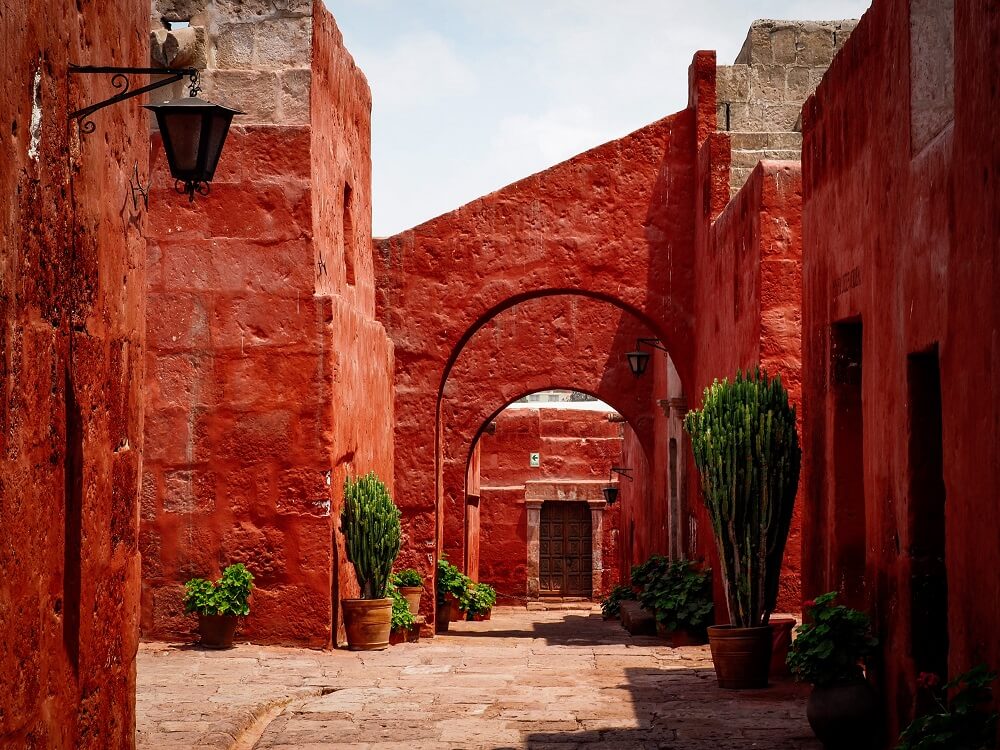
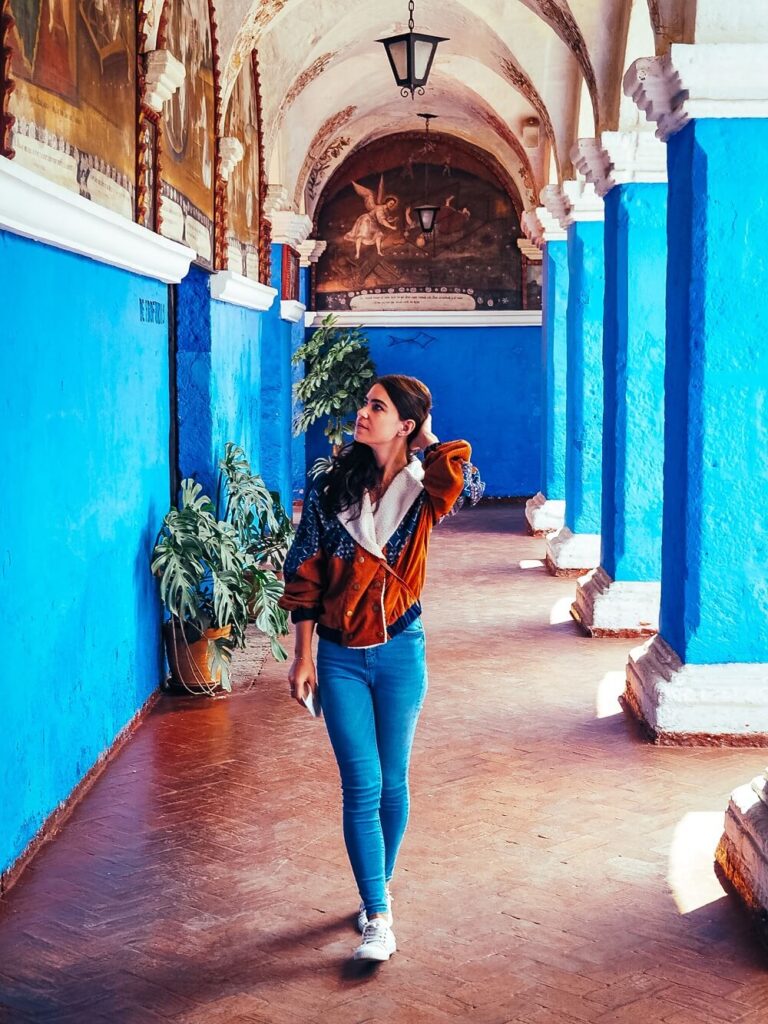

5. Get Lost in Santa Catalina Monastery
A must visit place during any visit to Arequipa is Santa Catalina Monastery. It was founded in the 16th century by Maria de Guzman and was home to at least 500 people, of which one third were nuns. These nuns were actually daughters of aristocratic Spanish families who – as a tradition – offered their second daughter to serve god.
After 400 years as a cloister, Santa Catalina Monastery opened its doors to the public in 1970. It is a huge complex covering around 20,000 sq-meters and just like other buildings in Arequipa, it was built from volcanic sillar stone. The monastery is organized into cloisters, living quarters, a plaza, a gallery, and a chapel, so there’s plenty to see during your visit. You’ll probably need a few hours to walk around and see most of it.
The monastery is open daily between 9AM and 6PM, although the last admission is at 5PM. Entry fee is S/.40 ($US10 / £9 per person.
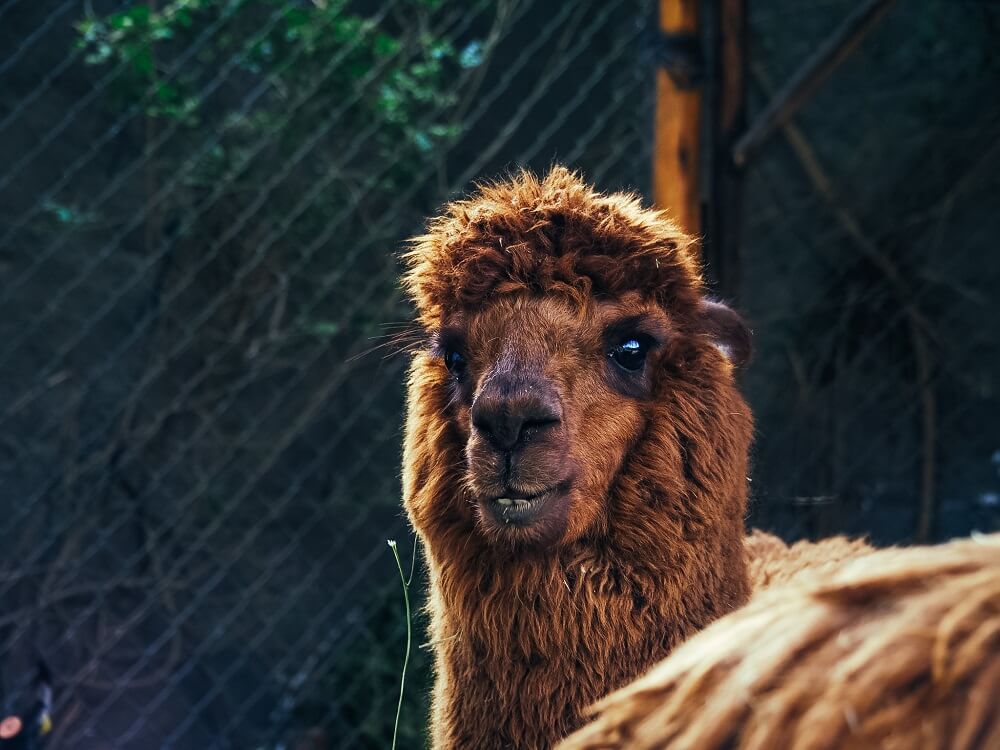

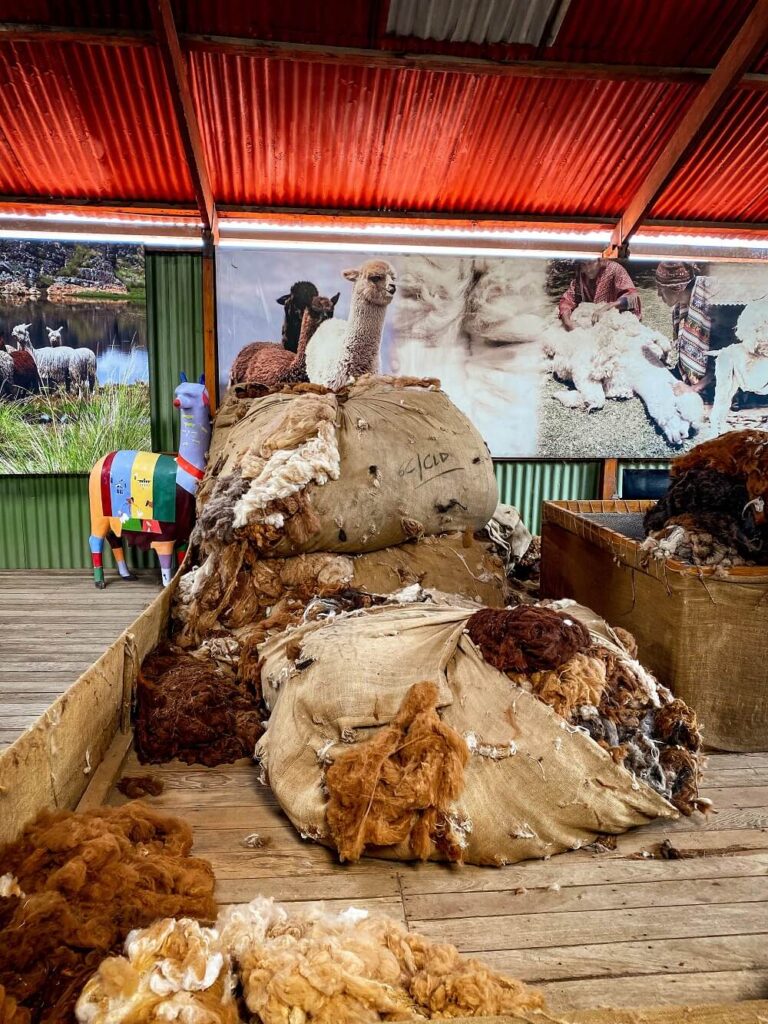
6. Make Some Furry Friends at Mundo Alpaca
At Mundo Alpaca, as part of a short tour, you’ll have the chance to learn about the different breeds of llamas and alpacas. After learning a bit more about these animals, you will also get to know how Alpaca fibre is processed into handicrafts. We found this part of the tour very interesting on its own.
Did you know? – Vicuñas are wild relatives of alpacas and Vicuña fibre is the finest in the world. Since vicuñas cannot be domesticated and herding communities can only shear them once every two years, it is also the most expensive textile in the world.
The best part about Mundo Alpaca – and the main reason many visit – is the cutest gang of llamas and alpacas they have. After getting to know the different types of breed and learning how they make those traditional Peruvian jumpers we’re pretty sure you’re going to buy, you’ll have the chance to feed the animals. They are really adorable and definitely won’t turn down some food. We had a fabulous time at Mundo Alpaca and we’re sure you’ll enjoy your visit too. What’s more? The whole experience is free.


7. Explore Barrio de San Lázaro, the Oldest Neighbourhood in Arequipa
Barrio de San Lázaro is the oldest neighbourhood in Arequipa and is located only a few blocks away from the Plaza de Armas. This is a picturesque area of narrow streets and white buildings that everyone should have a walk around when visiting Arequipa. You wouldn’t think that you’re in the second largest city of Peru when wondering through the narrow, cobbled stone streets.
On a clear day, you can also admire the volcanoes in the background. The whole are is pretty picturesque, so you’ll have no trouble taking beautiful photos. There are also plenty of trendy cafes and restaurants you can try out.
8. See Juanita at Museo Santuarios Andinos
Whilst there are plenty of museums in Arequipa, there’s one that should definitely be on your list: the Museum of Andean Sanctuaries. It is the resting place of Juanita.
Who is Juanita, you might ask? I guess it comes as no surprise that the Inca culture was known for making sacrifices. They often sacrificed humans instead of animals to make sure that their scarifies would work. One of these human scarifies was Juanita who was approximately 12 to 15 years old. Her body was discovered in 1995 when a glacier melted on Mount Ampato and revealed her body. Since Juanita was found pretty much entirely frozen, her hair, skin, internal organs and even the contents of her stomach were preserved. They also found many typical offerings such as llama bones, small figurines and pottery pieces.
The entry fee to the museum costs S/.20 which includes a mandatory guided tour. The guides are really amazing and share many interesting facts about the Incas and Juanita. Note that you cannot take photos inside!
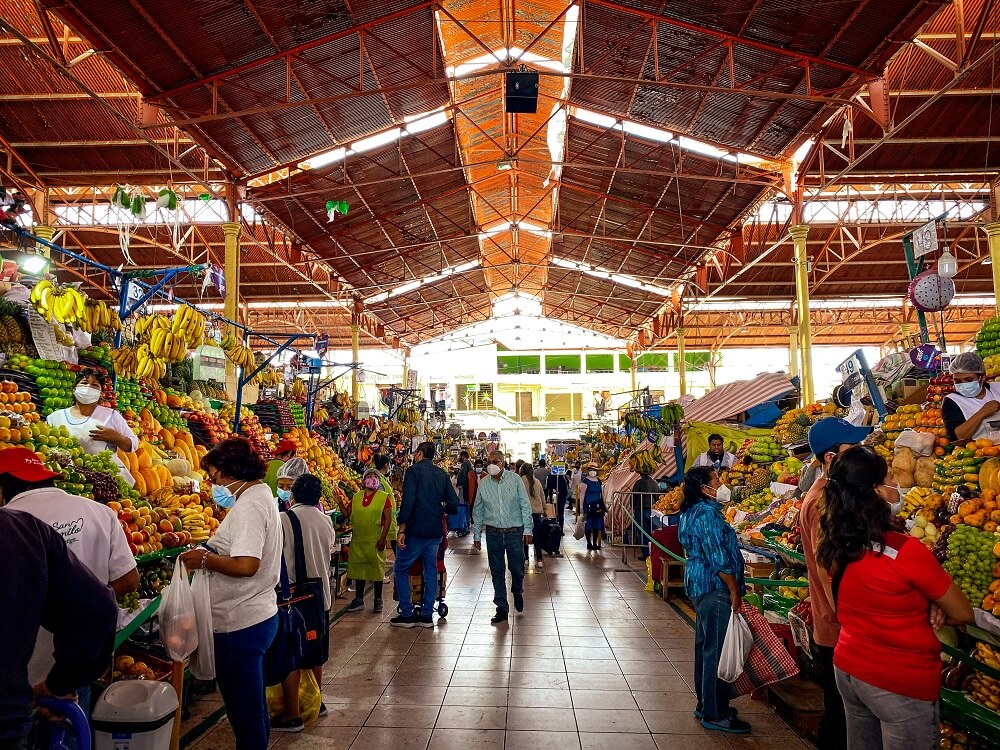

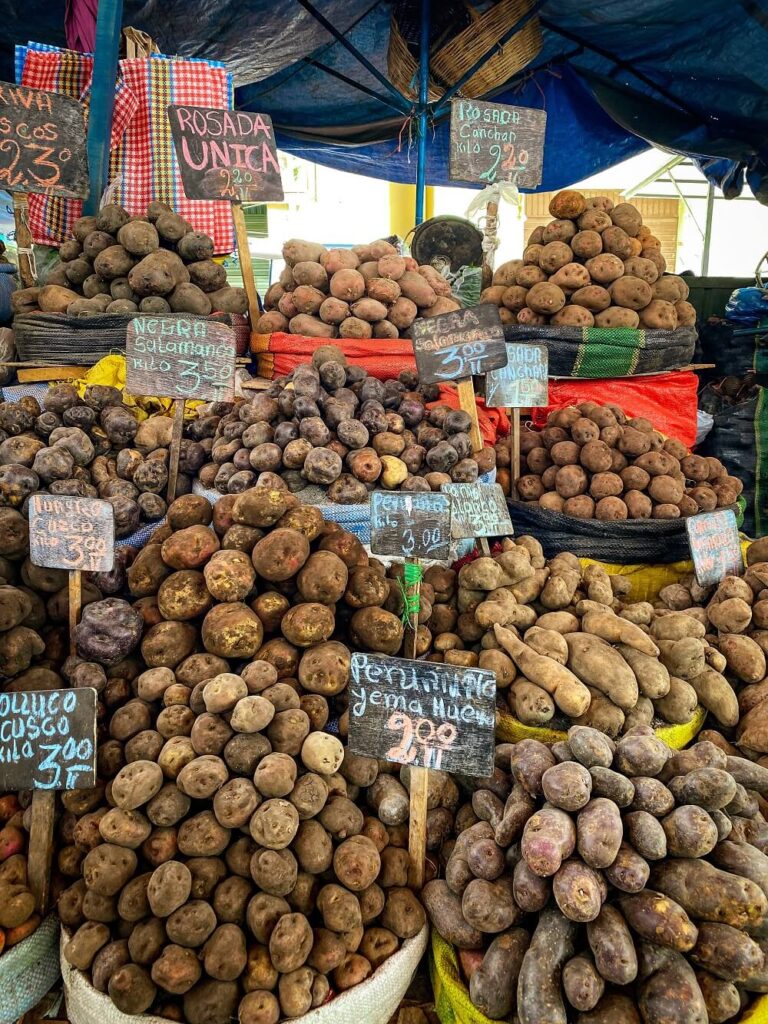
9. Visit the Colourful Mercado San Camilo
Located only a short walk from the Plaza de Armas is the lively and colourful San Camilo Market. If you’ve been reading our guides for a while now, you know that we can’t resist visiting markets. Whilst it’s great to see historical buildings, you’ll really get to know a city by visiting one of its markets.
San Camilo is the main market in Arequipa and also the oldest one. It’s a huge place filled with just about anything you’d want. Luckily, it’s very organised so you can easily find the section you’re interested in the most. They have some amazing local foods and also offer some of the tastiest fresh fruit juices. The market is also a great place if you’re planning on buying some typical Peruvian souvenirs because they are much cheaper.
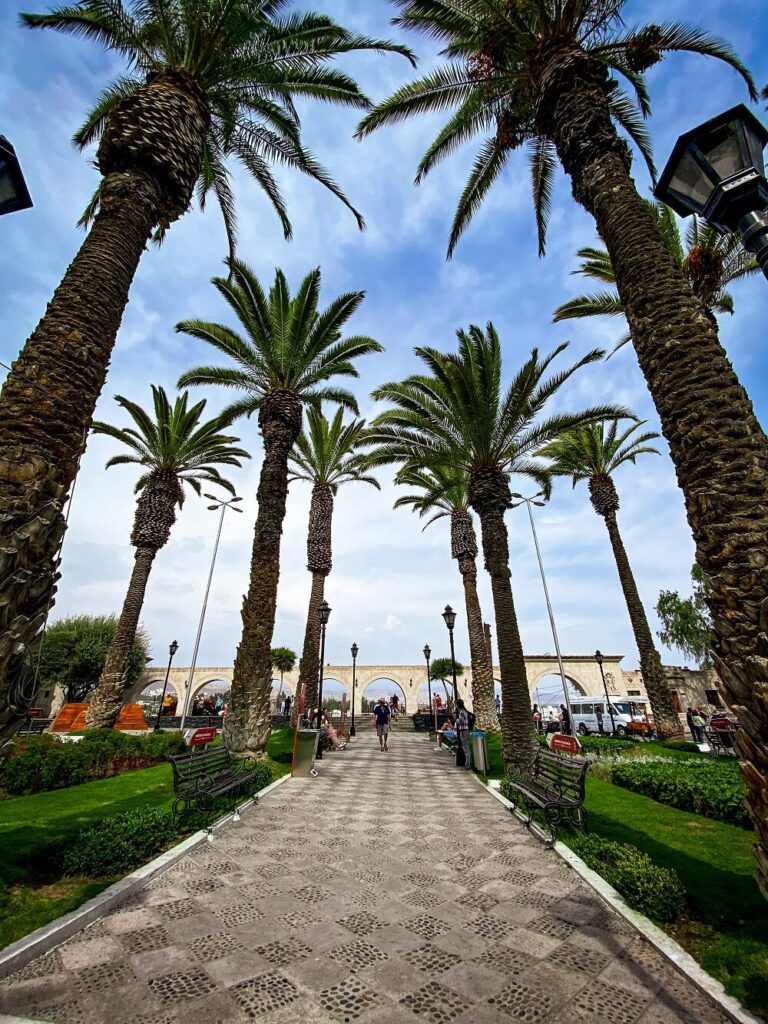
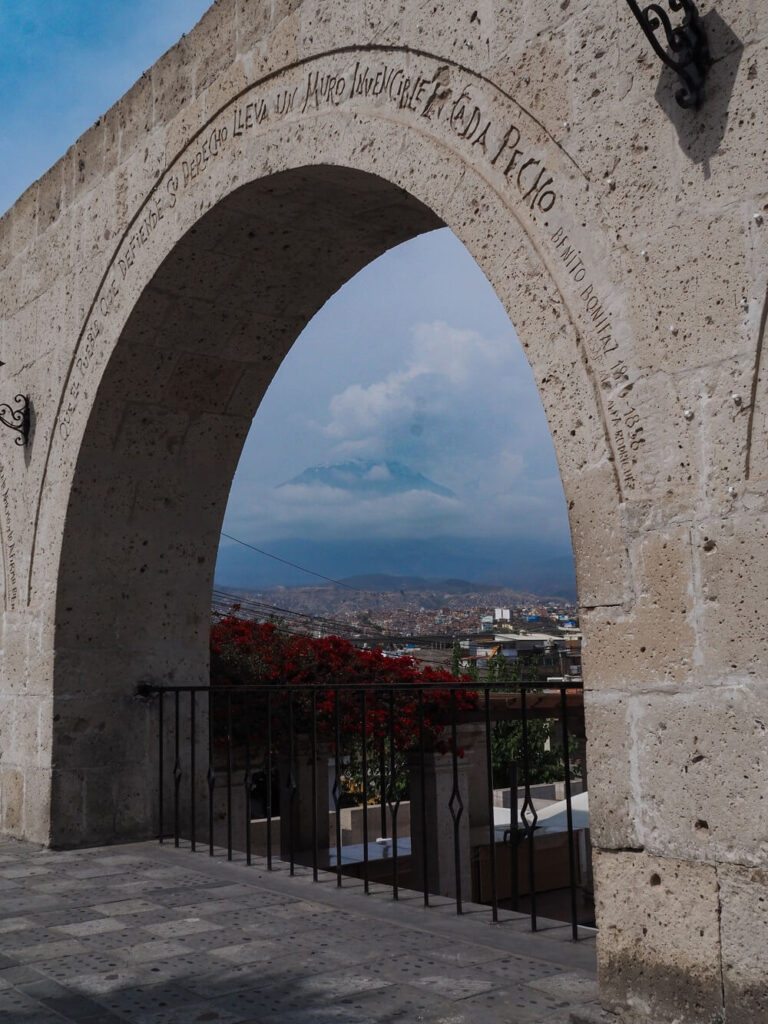
10. Wonder Around Yanahuara District and Yanahuara Viewpoint
Another area you should add to your Arequipa list of things to do is Yanahuara district. Located only about a 20 minute walk from the Plaza de Armas across the Rio Chili, you’ll find this neighbourhood much more tranquil than the centre.
The highlight of this district has to be Yanahuara viewpoint from where you can get some pretty stunning views of the Arequipa skyline and the volcanoes surrounding the city. Possibly the best time to visit is during sunset, so a trip to Yanahuara district is a great way to end a day in the city.
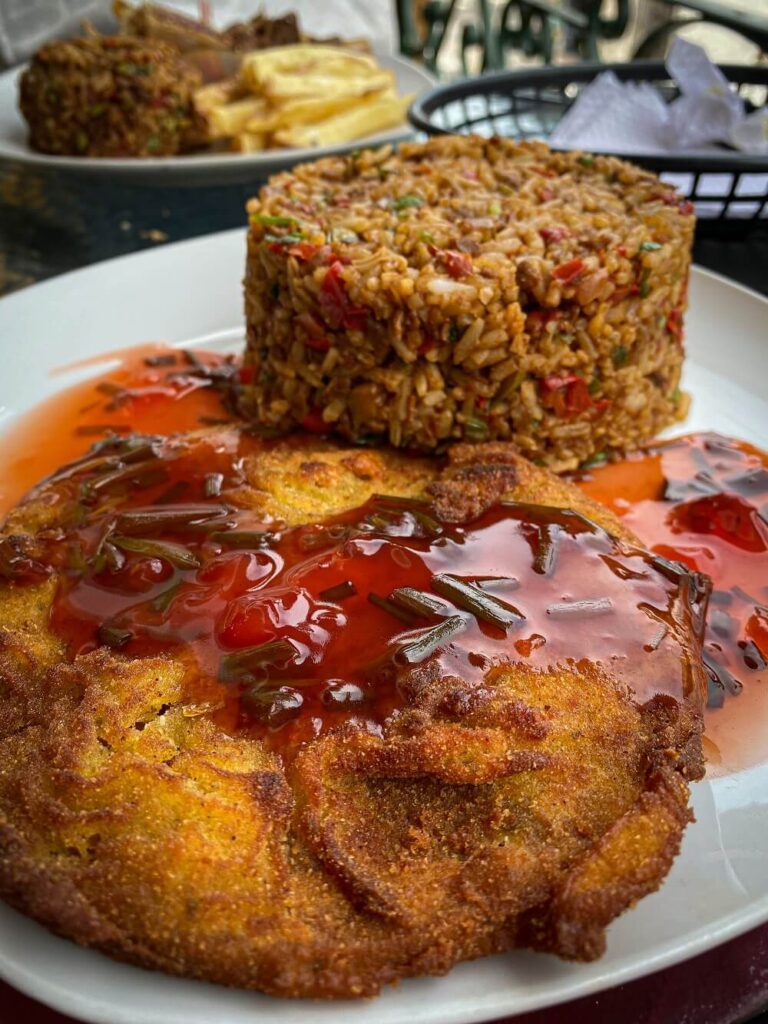
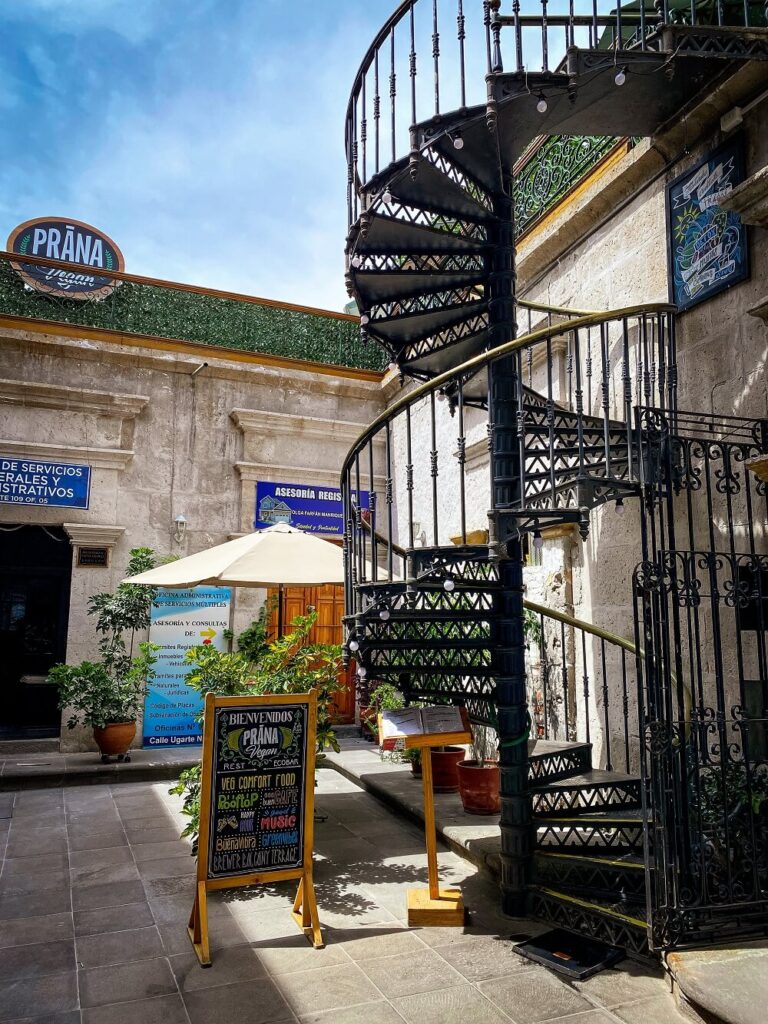
Where to Eat in Arequipa
If you’re in Arequipa then you have to eat at one of the many Picanterias. A picantería is basically a traditional family-run lunchtime restaurant around Arequipa. These Picanterias serve some of the best regional versions of Peruvian dishes.
Just like most places across Peru (and in South America), there are many places offering ‘menu del dia’ (menu’s of the day). It’s basically a set 2 or 3-course fixed lunch menu offering a starter of soup, a main dish and of course a dessert. They also include a drink. These lunch menus are really delicious and very affordable too. Prices vary but are normally S/. 10-20 per person. We had some great vegan deals at Omphalos Restaurant Vegetariano – Vegano and at Prana.
A must try dessert in Arequipa is Queso Helado (“cheese” ice cream). Don’t be fooled by the name; it actually doesn’t have cheese in or taste like it either. It’s usually made of whole milk, evaporated milk, cinnamon, cloves, desiccated coconut, sugar, and egg yolks. To us it tasted a bit like a very creamy vanilla ice cream. If you’re a cinnamon lover like us, then you’ll definitely enjoy this treat.
Of course if you really want to learn more about Peruvian food, then you can consider joining a cooking class or food tour.

Final Thoughts on Things to Do in Arequipa, Peru
We completely fell in love with Arequipa and it became our favourite city in Peru. We don’t say this often about a city, but it’s a place we would 100% go back to just to enjoy the food, coffee shops and it’s laidback vibe. Whilst we managed to see quite a few of Arequipa’s main tourist attractions, we really wish we had more time to do a few more day-trips from the city. On the flip side, this gives us a great excuse to return to this incredible city in the future.
Have you ever been to Arequipa before? If so, what was your favourite thing to do there? If not, which activity would be on top of your list? Let me know in the comments below.
Now, let your adventure begin,

Our Top Travel Resources
Accommodation: For hotels we always use Booking.com and Hostelworld for hostels. We also book longer stays on Airbnb or Vrbo.
Flights: To find the best flight prices we always check Skyscanner, Google Flights or WayAway. Then we also check the airlines’ websites too for comparison.
Car Rentals: We use Discover Cars when we want to rent a car as it compares local, national and international companies.
Activities: If we book organised tours we always check either GetYourGuide or Viator.
Foreign Currency: Whenever we can we prefer to pay in local currency and for that we always use our Wise card. We can easily withdraw money from the ATM or pay by card at most shops and restaurants.
Travel Insurance: We never go anywhere without travel insurance. You never know what will happen on your trip, so good travel insurance like SafetyWing can protect you in case of injury, illness, theft and cancellations.
eSIM and VPN: To get data abroad we use Airalo which is an app that allows you to download a prepaid eSIM to your phone in over 190 countries. Make sure to have a VPN to avoid hackers accessing your personal data when using public WIFI. We use Surfshark which is the only VPN that offers one account on unlimited devices.
Remember…It all starts with a Pin…

